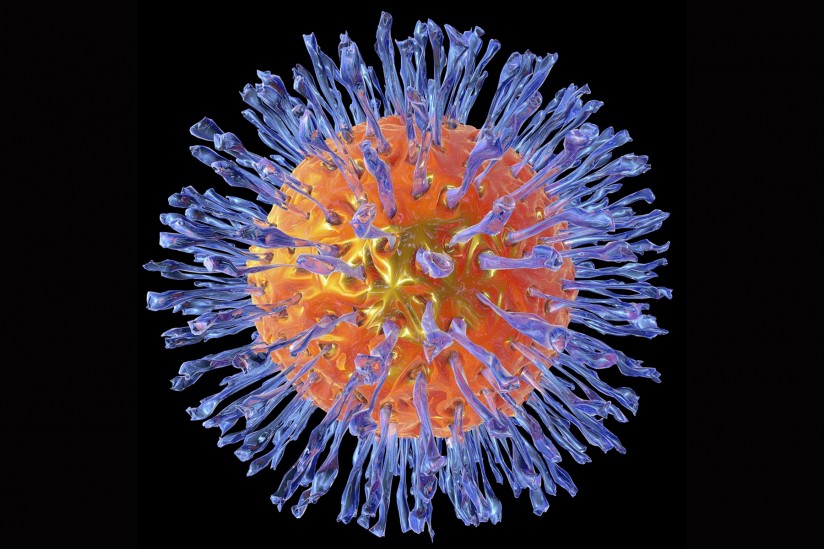
The discovery is significant because it offers new information about how the virus affects processes in the cell rather than the immune system.

Researchers from the University of Cambridge in the UK, and two German institutions: the Julius-Maximilian- Universität Würzburg and the Ludwig-Maximilian-Universität München, report their findings in the journal Nature Communications.
They describe how HSV-1 inserts its DNA into our cell DNA, takes over and disrupts the production of cell proteins while using it to make perfect versions of its own proteins.
Herpes simplex virus 1 (HSV-1) is very common and usually harmless. Most people become infected by their early 20s, and after the first infection, the virus remains dormant in the facial nerve tissues.
Now and again, the virus flares up and causes mild cold soresymptoms. But there are also cases where HSV-1 can lead to life-threatening disease. For instance, in intensive care units, it can cause severe lung problems.
And even in healthy people, there are rare instances where HSV-1 can spontaneously cause inflammation of the brain, resulting in irreversible brain damage.
From genes to proteins: transcription and translation
Our DNA code contains the instructions for making all the cells of our whole body, and the work that they do. Each cell contains the DNA for the whole individual, but not every cell needs to obey all the instructions in all of the DNA.
DNA on its own does not do anything. Imagine a cell is like a factory – its DNA holds the map of the factory and the instruction manuals for its production line. For the factory to work it needs workers and machinery. The cellular equivalent of these are proteins – the workhorses that carry out all the cell functions.
To create the workhorses or proteins, cells make working copies of the genes in the DNA that are relevant to them. Thus, liver cells copy genes in the DNA that are relevant to liver cells and ignore genes and bits of code relevant to lung and other types of cell.
Taking a working copy of a gene for making a protein is called transcription. The transcription is held in RNA molecules – they decide which proteins should be made by the cell.
The next stage, where RNA molecules instruct the cell machinery to make proteins is called translation. So the process of using DNA to make proteins has two stages – transcription and translation.
HSV-1 causes transcription of host cell proteins to ignore ‘end codes’
Viruses are not like cells – they have DNA, but no machinery. They survive by inserting their DNA into the DNA of host cells so that instead of making proteins for the cells, the cell machinery makes virus proteins and copies of the virus. Eventually, the host cell bursts and releases all the new virus particles so they are free to go and hijack other host cells.
Within a few hours of invading a host cell, HSV-1 has seized the protein-making machinery and is producing its own proteins and copies of itself on a massive scale.
The new study investigates in detail how HSV-1 manages to do this and evade detection by the immune system, which normally spots cells behaving abnormally and kills them before they can do too much damage.
The study team used cultures of fibroblasts – a type of human connective tissue cell. They note this is an ideal cell for investigating how HSV-1 seizes control of RNA molecules and gene transcription.
The researchers found that within 4 hours of entering the cell, HSV-1 does something quite unexpected. Usually, the process of transcribing the DNA into RNA stops when it reaches the end of the gene. A section of code that marks the end of the gene tells the transcription process to stop.
But in a host cell controlled by HSV-1, the transcription process ignores these end codes and goes on, blindly transcribing from DNA into RNA thousands of irrelevant sections of A, C, G and T code – sometimes from neighboring genes. The result is masses of unusable RNA products that cannot be translated into proteins.
One of the senior investigators, Professor Lars Dölken from Cambridge’s department of medicine and Würzburg’s institute of virology, describes the effect HSV-1 has on the host’s transcription process:
“It’s like someone transcribing a short story, but instead of stopping at ‘The End,’ they carry on and transcribe all the copyright and publication details and ISBN numbers at the beginning and end of the book. This produces lots of meaningless, confusing and useless information.”
Meanwhile, virus proteins are transcribed perfectly
Another interesting discovery is that although the host DNA is transcribed into nonsense, it transcribes the viral DNA perfectly throughout infection.
Thus, HSV-1 produces two results that are to its advantage. The effect of producing nonsense from the host cell DNA causes the cell to shut itself off – preventing the immune system from attacking the virus. And this in turn helps increase the production of viral proteins and the production of new virus particles.